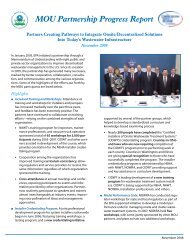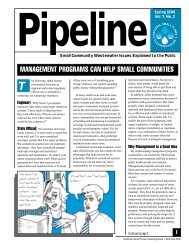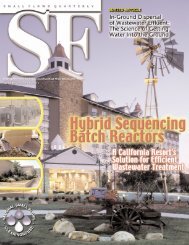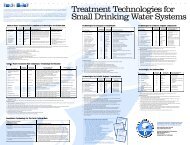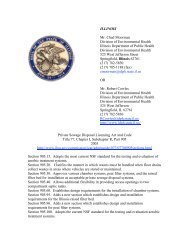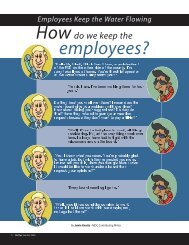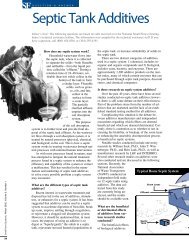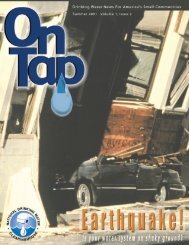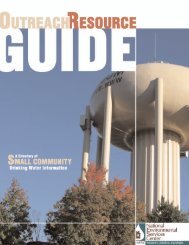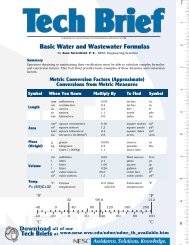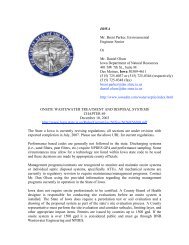Craig Mains | Technical Assistant - National Environmental Services ...
Craig Mains | Technical Assistant - National Environmental Services ...
Craig Mains | Technical Assistant - National Environmental Services ...
Create successful ePaper yourself
Turn your PDF publications into a flip-book with our unique Google optimized e-Paper software.
N E W<br />
S & N O T E S<br />
It is no secret that sewage is regularly dumped into the Great Lakes and Ontario’s<br />
waterways, says an Ecojustice report, “Flushing out the Truth, Sewage Dumping in<br />
Ontario.” But the dirty secret is how often it happens and exactly how much is dumped.<br />
The Ontario Ministry of the Environment estimates that the total volume of sewage<br />
dumped from sewage treatment plant bypasses was approximately 4.75 billion gallons in<br />
2006 and 2.11 billion gallons in 2007 with at least seven municipalities releasing more<br />
than a quarter of a billion gallons during that period.<br />
However, information about combined sewer overflows is scarce. And information isn’t<br />
even collected from 215 sewage treatment facilities operated by the Ontario Clean Water<br />
Agency. “Thus, the findings of this report demonstrate that the province does not know<br />
how much sewage is escaping proper treatment and being dumped into Ontario waterways.<br />
Our investigation has uncovered poor and inconsistent data collection on the part<br />
of the province and alarming amounts of sewage being routinely dumped by Ontario municipalities,”<br />
says the Ecojustice report.<br />
The report contains information about the Great Lakes Basin, which includes Lake<br />
Superior, Lake Michigan, Lake Huron, Lake Erie, and Lake Ontario, all of which are<br />
connected by rivers, streams, channels, and smaller lakes.<br />
To obtain a copy of this report, visit ecojustice.ca/publications/flushing-out-the-truthsewage-dumping-in-ontario.<br />
The size of the Dead Zone off the Louisiana/Texas coast rivaled the largest<br />
ever, says an August 27, 2009, nola.com article. A Dead Zone is an area where<br />
seasonal oxygen levels drop to levels too low to support most life in bottom and<br />
near-bottom waters. Phytoplankton growth stimulated by excess nutrients such as<br />
nitrogen and phosphorus causes the problem, says the article.<br />
The Office of the Inspector General has issued a report requesting that the<br />
U.S. <strong>Environmental</strong> Protection Agency (EPA) adopt enforceable limits on the release<br />
of nutrient pollutants such as fertilizer and sewage into rivers and streams<br />
and halt the creation of these dangerously low-oxygen areas.<br />
“We believe selecting nationally significant waters and acting to set standards<br />
for nutrients in them is a minimal first step is EPA is to meet requirements of the<br />
Clean Water Act,” says the office.<br />
“Critical national waters such as the Gulf of Mexico and the Mississippi River<br />
require standards that once set will affect multiple upstream states. These states<br />
have not yet set nutrient standards for themselves; consequently it is EPA’s responsibility<br />
to act,” says OIG, adding that EPA should act by 2010.<br />
For more information about this story, visit www.epa.gov/oig/reports/<br />
2009/20090826-09-P-0223.pdf.<br />
7




